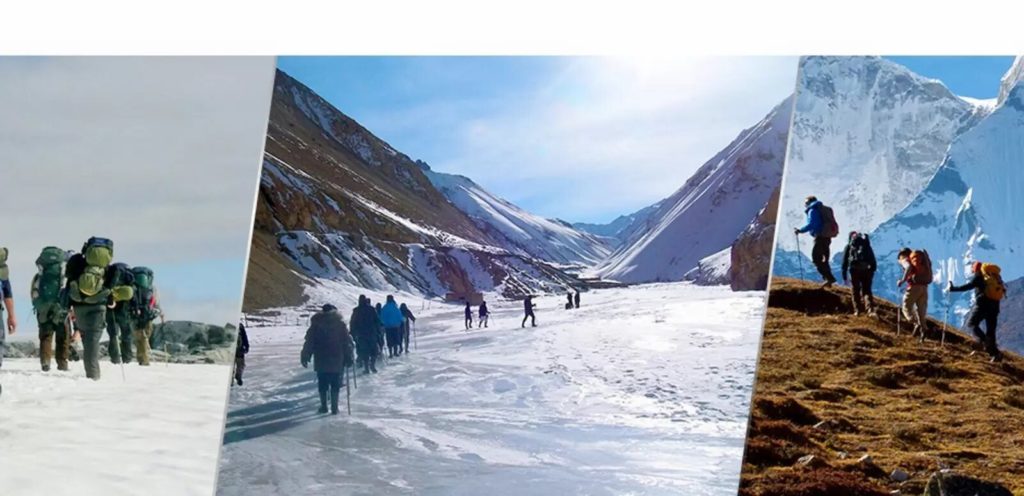Nepal’s Kanchenjunga Conservation Area is an adventurer’s dream destination. The third-highest mountain in the world, Mount Kanchenjunga, towers over the region, providing stunning natural beauty that should be on every adventurer’s bucket list. The trekking route perfectly blends natural beauty, cultural richness, and adventure, quickly becoming a popular destination for those seeking a unique and off-the-beaten-path experience.
The natural beauty of the Kanchenjunga region is unmatched. The Kanchenjunga trek offers breathtaking views of the Kanchenjunga massif, including four of the five highest peaks in Nepal. Along the way, trekkers can enjoy pristine forests, sparkling waterfalls, and an array of flora and fauna, making for a truly awe-inspiring experience.
The Kanchenjunga region is also known for its rich cultural heritage. Local communities are known for their warm hospitality and welcoming nature. Visitors can witness traditional dance performances, visit ancient monasteries, and taste local cuisine, a delightful mix of Tibetan, Nepalese, and Indian flavors. This provides an opportunity for trekkers to interact with the local people, learn about their customs and traditions, and gain a deeper appreciation for their way of life.
The Kanchenjunga trek is challenging, requiring a certain level of physical fitness and endurance. Trekkers must push themselves to overcome challenges such as altitude sickness, steep climbs, and long hours of walking. However, with every step, they gain a deeper appreciation for their strength and resilience. The trek provides a unique sense of adventure as trekkers traverse remote areas, cross high mountain passes, and navigate rugged terrain.
Unlike some of Nepal’s more popular trekking routes, Kanchenjunga is relatively unknown, making it a perfect destination in the Himalayas for those who want to explore off the beaten path. Trekkers can trek through unspoiled landscapes, interact with local communities, and experience a side of Nepal that few tourists see.
Trekking through the Kanchenjunga region is also an opportunity for personal growth and self-discovery. As trekkers walk through the quiet forests and mountain trails, they have time to reflect on their life and priorities and gain a fresh perspective on what matters. They also learn to push past their limits and develop mental strength that will serve them well in all areas of their life.
The Kanchenjunga region is home to a diverse array of flora and fauna unique to the region. Trekkers can see everything from towering rhododendron trees to rare and endangered species of animals, such as the snow leopard and the red panda. Trekking through the region is like walking through a natural wonderland, where every turn reveals something new and fascinating.
The Kanchenjunga region has a rich history that dates back thousands of years. Along the trekking route, trekkers can pass through ancient villages and monasteries steeped in history and tradition. They can learn about the region’s past, including its connections to Buddhism and Tibetan culture, and gain a deeper appreciation for the area’s rich cultural heritage.
Finally, the Kanchenjunga trek is known for its spectacular mountain views. The trek provides trekkers with the opportunity to witness the awe-inspiring beauty of the Kanchenjunga massif up close, making it an unforgettable experience.
In conclusion, the Kanchenjunga trek offers a unique blend of natural beauty, cultural richness, and adventure that should be on every adventurer’s bucket list. It requires a certain level of physical fitness and endurance, but the rewards are worth it. The trek is also a chance to disconnect from the noise and distractions of modern life and reconnect with your inner self. Walking through the quiet forests and mountain trails, you will have time to reflect on your life and priorities and gain a fresh perspective on what matters.

